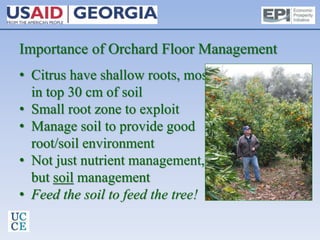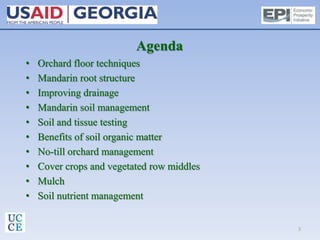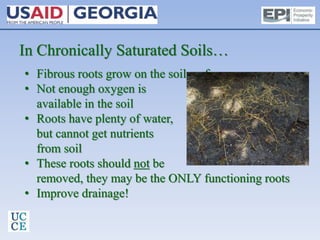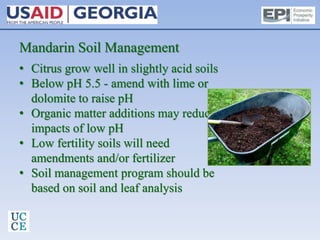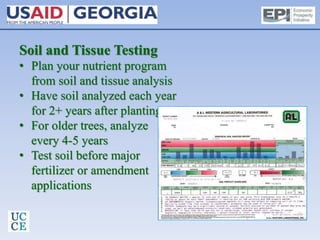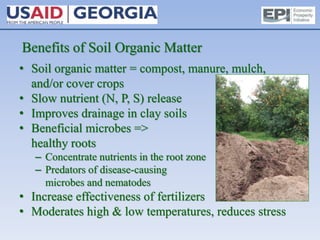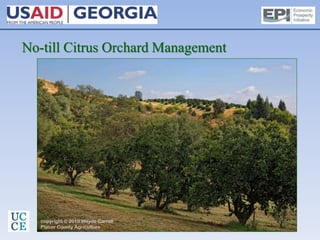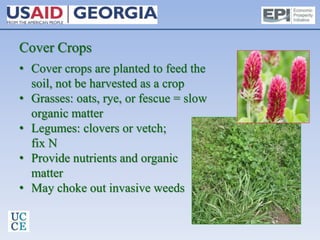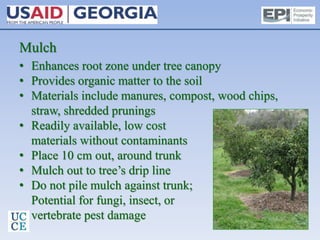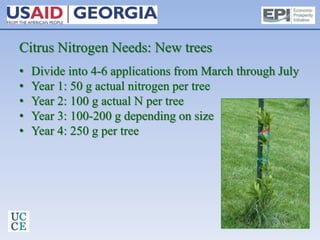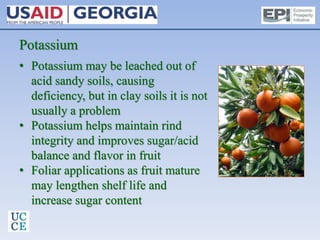This document provides guidance on orchard floor management techniques for mandarin orchards. It discusses the importance of proper soil and nutrient management for citrus trees, which have shallow root systems. Key recommendations include using no-till practices to protect roots, improving drainage in wet soils, adding organic matter through cover crops, mulches and compost, and dividing fertilizer applications based on soil and tissue tests. Maintaining undisturbed soil with adequate organic matter through these techniques helps promote healthy root growth and maximize fruit yields.

